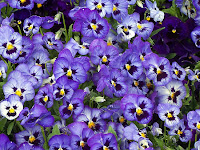In the Fall of 1968 I was a very green Freshman at the University of Minnesota, a campus comprised of over 50,000 students. For a 17 year old kid from Fridley, MN., the entire experience was intimidating. That first Fall Quarter I commuted to campus with my buddy Don Hanson because I had pledged to help my dad in his part time Christmas Wreath Business later that Fall.
Commuting is not the best way to become ingrained into university life, and this first Quarter was scary for me; I just didn’t feel like I belonged yet. But I was determined to succeed and gave it my best shot. These were the days of bell bottomed jeans and paisley shirts. I also had this real cool red scarf that I often wore. Although I was somewhat uneasy at the U, at least I looked good!
One fine, sunny Fall day as Don and I were walking across campus back to the church parking lot where we always parked, I noticed a big fat squirrel running straight down a maple tree toward the ground. While talking to Don, I watched this fuzzy grey creature and admired his dexterity. Wouldn’t it be great to be able to climb trees like that…
Well, about 5 feet from the ground, the squirrel stopped running down the trunk of the tree and looked right at me. Actually, looking me right in the eye. After a moment or two of this, I stopped walking and commented to Don, who had also stopped, that the squirrel on that tree over there was looking right at me - from a distance of about 50 feet or so.
"Are you sure he's looking right at you?", Don asked me. "Well yeah. Right at me; look at him! It's so weird.” I replied, still looking right at the squirrel.
The sidewalk was crowded with lots of other students that had begun detouring around us on the crowded sidewalk as Don looked at me - looking at the squirrel. After half a minute or so of this, in a flash, the squirrel leaped from the tree in one big jump and began bounding toward me as fast has his tiny little legs could propel him. "Well look at that Don. That little guy is running right at me, and look at him - he's still looking right at me! This is really getting weird", I exclaimed as the squirrel rapidly approached.
At about 15 feet away however, I became a little concerned with what was going to happen next, when the fuzzy little guy got to me. Don started backing away, and the nearby students sidled off to the side - not wanting to become involved with any of the campus's wildlife. When the squirrel was 5 feet from me, he made a giant leap and landed on the front of my thigh, actually gripping right through my favorite bell bottomed jeans, on to my skin - all the while looking straight up into my eyes. "Well J____ C_____!" I screamed to no one in particular. I was spectacularly alarmed.
I dropped my books and started shaking my leg as hard as I could in an attempt to dislodge the creature - to no avail; he was stuck to me like glue, his tiny claws digging into my thigh. Finally, with both hands, I shoved him off of my leg, trying to keep my hands away from his tiny little teeth, and ran like a bat out of hell. After all the yelling and swearing I was doing, quite a crowd had stopped to watch the spectacle and they all cleared the way for me - and the squirrel. I've always been a fast runner and with a few looks over my shoulder I could see that the squirrel was losing ground although he surely was trying to catch up. Unreal! I’ve been in many races, but I don’t believe I’ve ever run that fast.
I raced to the corner of University Avenue, taking note that the stop light was green (although it wouldn’t have mattered), and without any hesitation ran across the street. After arriving 3 lanes of busy traffic on the other side of University Avenue I finally stopped running to make sure my escape was complete. It was. There was no sign of the squirrel.
How unreal was that, I thought to myself. I was chased off campus by a squirrel. Just about the time I caught my breath, Don arrived with my books. "That's the damndest thing I've ever seen in my life John. That's even weirder than staying overnight in prison with you (that’s another story)."
We never walked that way back and forth through campus. Ever.
John








